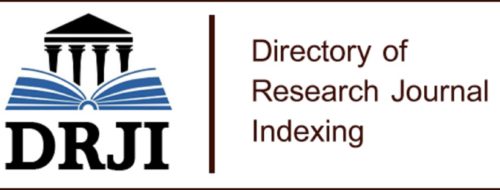Integrated management of Diaphania hyalinata L. in cucumber crop (Cucumis sativus L.)
DOI:
https://doi.org/10.56124/allpa.v8i15.0105Keywords:
Control, natural enemies, pests, biological productsAbstract
Agroecology is an alternative model that seeks to solve the problems of agricultural production in a sustainable way by guaranteeing future development, taking into account the economic, social and environmental dimensions, through the use whenever possible of methods: cultural, biological and mechanical. Among the procedures is the use of pesticides that excessively favor the appearance of pest outbreaks, for this reason it is necessary to prepare a proposal for Integrated Pest Management in cucumber cultivation, in Diaphania hyalinata L. It is the main organism harmful to cucumber, by designing a strategy with the objective of preventing the appearance, increase or proliferation of populations and at the same time minimizing the use of chemicals that genetically modify these organisms, reducing enemy populations. natural ones found in the crop. With the application of integrated management, we seek to increase the applications of biological products compatible with the environment.
Keywords: Control, natural enemies, pests, biological products.
Downloads
References
Alonso, P. (2024). El control del barrenador del pepino y gusano soldado. Agro Excelencia. La Revista del Profesional del Campo. https://agroexcelencia.com/el-control-del-barrenador-del-pepino-y-gusano-soldado-desafios-para-productores-de-cucurbitaceas/
Andina, J. (2017). El Manejo Integrado de Plagas (MIP): Perspectivas e importancia de su impacto en nuestra región. Scielo 5(2), 67-69. http://www.scielo.org.bo/pdf/jsab/v5n2/v5n2_a01.pdf
Cabrera, L. (2021). Insectos y su Manejo Integrado. https://www.upr.edu/eea/wp-content/uploads/sites/17/2016/03/MELON-INSECTOS-Y-SU-MANEJO.pdf
Castellanos, L.., Rivero, T., Pérez, A., Gómez, E., & Jiménez, R. (2009). El Manejo Integrado de Plagas en la Provincia de Cienfuegos 1996 a 2006. Editorial Universo Sur. https://www.researchgate.net/profile/Leonides-Castellanos/publication/317106668_El_MANEJO_INTEGRADO_DE_PLAGAS_EN_LA_PROVINCIA_DE_CIENFUEGOS_1996_a_2006/links/5926d212458515e3d45f36ee/El-MANEJO-INTEGRADO-DE-PLAGAS-EN-LA-PROVINCIA-DE-CIENFUEGOS-1996-a-2006.pdf
Ceballos, C. (2022). Feromonas sexuales de los principales lepidópteros que afectan cultivos de la familia cucurbitáceas en el departamento de Córdoba y su potencial uso para el control de plagas. https://repositorio.unicordoba.edu.co/handle/ucordoba/4809
Chacón, K. & Monge, J. (2021). Manejo integrado de plagas en pepino (Cucumis sativus) cultivado bajo invernadero. https://www.researchgate.net/publication/351392234_Manejo_integrado_de_plagas_en_pepino_Cucumis_sativus_cultivado_bajo_invernadero_una_experiencia
Chávez, I., Zelaya, L., Santos, S., Cruz, C., Ruíz, S., & Rojas, E. (2022). Control biológico de plagas en la agricultura mexicana. Revista mexicana de ciencias agrícolas, 13(27), 69-79. https://doi.org/10.29312/remexca.v13i27.3251
Dávila, F., Reyes, E., Matey, W., & Rojas, W. (2017). Estrategia MIP del cultivo de pepino Cucumis sativus L. Pdfcoffee. https://pdfcoffee.com/estrategia-mip-del-cultivo-de-pepino-cucumis-sativus-l-pdf-free.html
Guía de Manejo Integrado de Plagas. (2023). Guía del Manejo Integrado de Plagas (MIP) para técnicos y productores. https://www.jica.go.jp/Resource/project/panama/0603268/materials/pdf/04_manual/manual_04.pdf
Koppert, C. (2024). Pepino. Plagas, enfermedades y control biológico. https://www.koppert.es/cultivos/hortalizas-bajo-cultivo-protegido/pepino/
Monge, J., & Chacón, K. (2021). Manejo integrado de plagas en pepino (Cucumis sativus) cultivado bajo invernadero. https://hdl.handle.net/10669/83398
Olguín, G., Cisneros, V., & Ventura, J. (2022). Plagas insectiles de importancia en el cultivo de chayote (Sechium edule) y su manejo. https://www.google.com/url?sa=t&source=web&rct=j&opi=89978449&url=https://revista-agroproductividad.org/index.php/agroproductividad/article/download/446/326/&ved=2ahUKEwjIzPOfoqaJAxWzTTABHVupNlYQFnoECBcQAQ&usg=AOvVaw21xkx07Reg6YUbq93D6DYB
Organización de las Naciones Unidas para la Alimentación y la Agricultura. (2024). Gestión de plagas. Manejo integrado de plagas y plaguicidas. IPM and Pesticide Risk Reduction. https://www.fao.org/pest-and-pesticide-management/ipm/integrated-pest-management/es/
Pérez, N. (2004). Manejo Ecológico de plagas. https://es.studenta.com/content/70972991/manejo-ecologico-de-plagas
Peteira, B. (2020). La resistencia inducida como alternativa para el manejo de plagas en las plantas de cultivo. Revista de Protección Vegetal, 35(1). http://scielo.sld.cu/scielo.php?script=sci_abstract&pid=S1010-27522020000100001&lng=es&nrm=iso&tlng=es
Pinzón, C. (2024). Control y supresión de plagas con métodos etológicos. Agrisolucion. https://www.editorialderiego.com/2023/05/plagas-2/
Posada, F. (1992). Ciclo de vida, consumo foliar y daños en frutos del melon por Diaphania hyalinata (L)(Lepidoptera: Pyralidae). Revista Colombiana de Entomología, 18(1). https://doi.org/10.25100/socolen.v18i1.10089
Pozo, E. (1993). Biología de Diaphania hyalinata L. (Lepidoptera, Pyralidae) en cucurbitaceas. Lucha biológica Tesis final Biología, Universidad Central de Las Villas, Cuba. 43 p.
Pozo, E., & Grillo, H. (2004) Complejo de enemigos naturales de Diaphania hyalinata en la región Central de Cuba. Centro Agrícola 25 (1):22-23.
Pozo, E., Valdés, R., Cárdenas, M., & Mora, E. (2005). Consumo de alimento por Diaphania hyalinata (L.) (Lepidoptera: Pyralidae) en pepino (Cucumis sativus L.). Fitosanidad, 9(3), 15-20. https://www.redalyc.org/pdf/2091/209116189002.pdf
Rodríguez, A. (2004). Dinámica, Control biológico y Manejo de Diaphania Hyalinata (Linné) En el cultivo de la calabaza. Redalyc, 8(2), 1-59. https://www.redalyc.org/pdf/2091/209117836016.pdf
Seebold, K., Coolong, T., Jones, T., Strang, J., Bessin, R., & Kaiser, C. (2022). Guía de Monitoreo de MIP para Plagas Comunes de los Cultivos Cucurbitáceos en Kentucky. University of Kentucky College of Agriculture, Food and Environment. https://publications.ca.uky.edu/sites/publications.ca.uky.edu/files/ID91s.pdf
Villarreal, M., Villadiego, E., Cira, L., Estrada, M., Parra-Cota, F., & Santos, S. (2018). El género Bacillus como agente de control biológico y sus implicaciones en la bioseguridad agrícola. Revista mexicana de fitopatología, 36(1), 95-130. https://doi.org/10.18781/r.mex.fit.1706-5
Vivas, L. (2017). El Manejo Integrado de Plagas (MIP): Perspectivas e importancia de su impacto en nuestra región. Journal of the Selva Andina Biosphere, 5(2), 67-69. https://portal.amelica.org/ameli/journal/71/711299001/html/
Zelaya, L., Chávez, I., Santos, S., Cruz, C., Ruíz, S., & Rojas, E. (2022). Control biológico de plagas en la agricultura mexicana. Revista mexicana de ciencias agrícolas, 13(27), 69-79. https://doi.org/10.29312/remexca.v13i27.3251
Published
How to Cite
Issue
Section
License
Copyright (c) 2025 Revista de Ciencias Agropecuarias ALLPA. ISSN: 2600-5883.

This work is licensed under a Creative Commons Attribution-NonCommercial-ShareAlike 4.0 International License.


.jpg)










